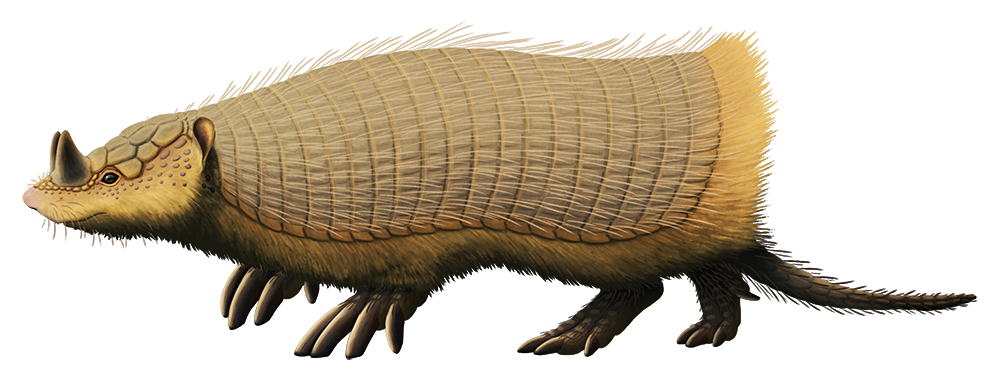Peltephilus ferox, an armadillo from the Early Miocene of Argentina (~17-16 mya) that was similar in size to a large dog, probably around 1.5m long (5′). It had less solid armor than its modern relatives, with its bony osteoderms being arranged more like chain mail, loosely connected to each other and slightly overlapping, creating a much more flexible body covering.
Its most unusual features were the horns on its snout, convergently resembling the later horned gophers of North America. But unlike other mammals Peltephilus‘ horns were actually modified plates of its face armor, enlarged pointed osteoderms that were only connected to its skull by soft tissue membranes – meaning that after death they tended to fall off, and the exact number and position of them is still a little uncertain.
Its unusually broad snout and large teeth were originally interpreted as evidence of it being an active carnivore, but more recent studies of its anatomy have suggested that it was much more likely to have been a herbivorous or omnivorous digger, mainly feeding on underground plant matter like roots and tubers.

